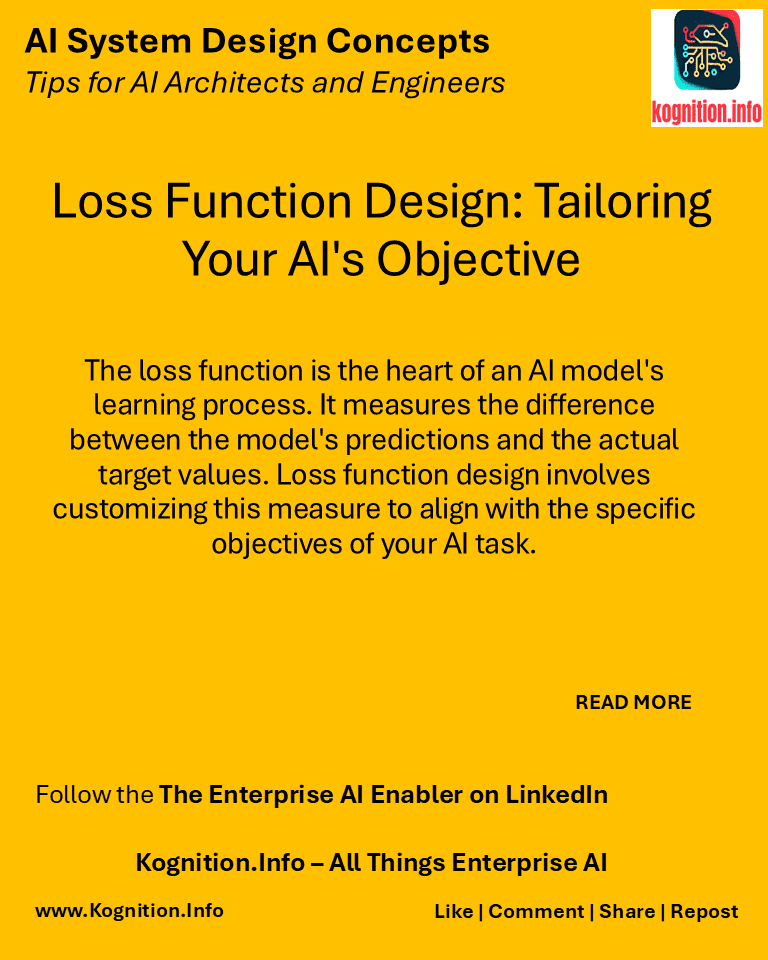
The loss function is the heart of an AI model’s learning process. It measures the difference between the model’s predictions and the actual target values. Loss function design involves customizing this measure to align with the specific objectives of your AI task.
Use cases:
- Regression: Using Mean Squared Error (MSE) for predicting continuous values, or Mean Absolute Error (MAE) when outliers are a concern.
- Classification: Employing Cross-Entropy loss for multi-class classification, or Hinge loss for Support Vector Machines.
- Object detection: Utilizing a combination of localization and classification losses to optimize both object location and class prediction.
How?
- Understand the task: Clearly define the objective and the desired behavior of the model.
- Analyze the data: Consider the data distribution and the type of errors that are most important to minimize.
- Explore existing loss functions: Research common loss functions and their properties.
- Customize the loss function: Modify existing functions or design new ones to address specific requirements.
- Evaluate the impact: Assess the effect of the custom loss function on model performance and interpretability.
Benefits:
- Improved performance: A well-designed loss function can significantly improve model accuracy and efficiency.
- Task-specific optimization: Tailors the learning process to the specific needs of the task.
- Enhanced model interpretability: Reflects the priorities and objectives of the AI application.
Potential pitfalls:
- Complexity: Designing custom loss functions can be complex and require careful consideration.
- Unintended consequences: A poorly designed loss function can lead to unexpected model behavior or biases.
- Difficulty in optimization: Custom loss functions may require specialized optimization algorithms.
